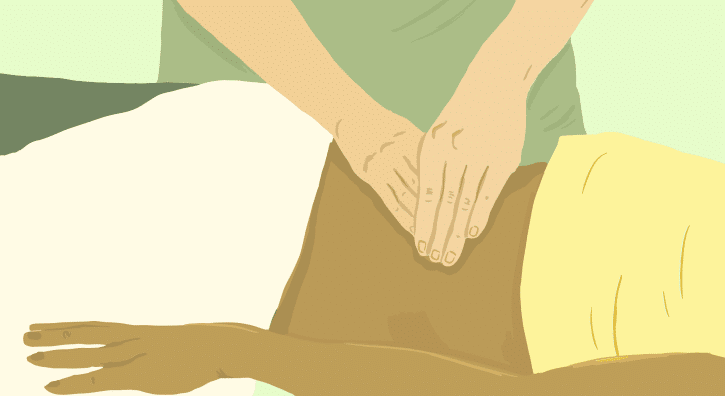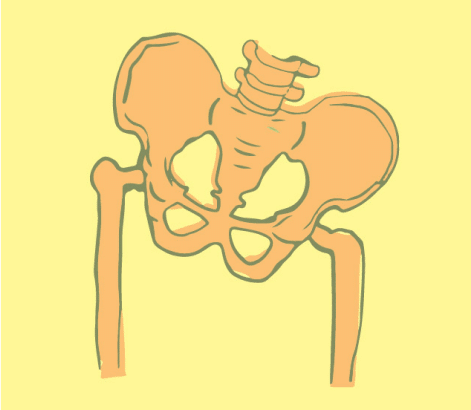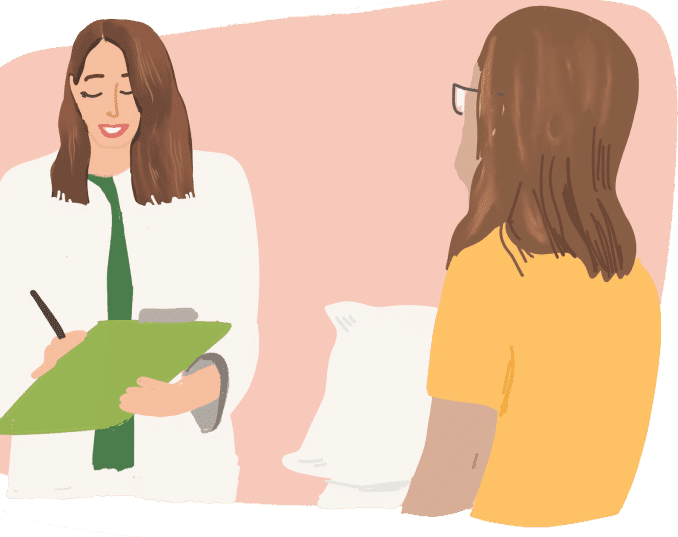

Symptoms
- Pelvic discomfort can include symptoms like burning, throbbing, or soreness in sensitive areas such as the vaginal canal, vulva, perineum, or anus
- Pain during intimacy, when wearing close-fitting clothing, or after sitting too long is frequently reported
- Certain types of physical activity may worsen the pain or cause it to flare up
- Women may also experience urinary issues like urgency, leakage, frequent urination, or pain while peeing
- Bloating, constipation, or other digestive issues often accompany the pelvic symptoms
- Triggers may include tampon use or sexual activity, though sometimes symptoms seem to appear out of nowhere
- Symptom patterns can differ—some women face persistent issues, while others deal with pain that comes and goes

Symptoms
- Pelvic discomfort can include symptoms like burning, throbbing, or soreness in sensitive areas such as the vaginal canal, vulva, perineum, or anus
- Pain during intimacy, when wearing close-fitting clothing, or after sitting too long is frequently reported
- Certain types of physical activity may worsen the pain or cause it to flare up
- Women may also experience urinary issues like urgency, leakage, frequent urination, or pain while peeing
- Bloating, constipation, or other digestive issues often accompany the pelvic symptoms
- Triggers may include tampon use or sexual activity, though sometimes symptoms seem to appear out of nowhere
- Symptom patterns can differ—some women face persistent issues, while others deal with pain that comes and goes

Associated Diagnoses
Diagnoses such as Endometriosis, Vulvodynia, Interstitial Cystitis/Painful Bladder Syndrome, Pudendal Neuralgia, Lichen Sclerosus, Lichen Planus, and Irritable Bowel Syndrome are associated with pelvic pain and pelvic floor dysfunction.


Causes of Pelvic Pain
- Persistent vaginal and urinary tract infections or long-term health issues in the GI tract, reproductive system, urinary system, or skin
- Pelvic floor dysfunction is commonly found among women who deal with chronic pelvic discomfort
- Hormonal medications—including contraceptives, acne-related treatments, and therapies for hormonal conditions like PCOS and Endometriosis
- Surgical procedures such as hysterectomy or prolapse correction, as well as injury during childbirth
- Orthopedic events like bone injuries or musculoskeletal trauma
- Structural abnormalities like pelvic misalignment, SI joint problems, scoliosis, or unequal limb length
- Delivery via the vaginal canal
- Symptoms and complications tied to menopause
- Non-consensual or cultural genital cutting and mutilation
Causes of Pelvic Pain
- Persistent vaginal and urinary tract infections or long-term health issues in the GI tract, reproductive system, urinary system, or skin
- Pelvic floor dysfunction is commonly found among women who deal with chronic pelvic discomfort
- Hormonal medications—including contraceptives, acne-related treatments, and therapies for hormonal conditions like PCOS and Endometriosis
- Surgical procedures such as hysterectomy or prolapse correction, as well as injury during childbirth
- Orthopedic events like bone injuries or musculoskeletal trauma
- Structural abnormalities like pelvic misalignment, SI joint problems, scoliosis, or unequal limb length
- Delivery via the vaginal canal
- Symptoms and complications tied to menopause
- Non-consensual or cultural genital cutting and mutilation

Diagnostic Challenges
Studies reveal that the road to a pelvic pain diagnosis can be surprisingly long—up to five years for many women, and over a decade for conditions like Endometriosis. One of the key challenges is that pelvic pain often mimics other conditions, such as urinary tract infections, sexually transmitted infections, and vaginal or bladder issues. As a result, many women experience repeated misdiagnoses and ineffective treatments. When pelvic floor dysfunction is responsible, traditional diagnostic tests often return normal results, making the condition even harder to identify. It’s common for women to begin pelvic physical and occupational therapy having never been told that their pelvic floor could be contributing to their symptoms.
Diagnostic Challenges
Studies reveal that the road to a pelvic pain diagnosis can be surprisingly long—up to five years for many women, and over a decade for conditions like Endometriosis. One of the key challenges is that pelvic pain often mimics other conditions, such as urinary tract infections, sexually transmitted infections, and vaginal or bladder issues. As a result, many women experience repeated misdiagnoses and ineffective treatments. When pelvic floor dysfunction is responsible, traditional diagnostic tests often return normal results, making the condition even harder to identify. It’s common for women to begin pelvic physical and occupational therapy having never been told that their pelvic floor could be contributing to their symptoms.
Treatment:
How We Can Help You

If you’re in Echo Park and have been battling chronic pelvic pain, a specialized evaluation with a pelvic floor physical and occupational therapists could provide the clarity and progress you’ve long been searching for. This detailed assessment doesn’t just focus on your current symptoms—it reviews your full medical background, including past diagnoses, unsuccessful treatments, and therapies that may not have yielded the results you hoped for. By the time many local women reach our clinic, they are emotionally exhausted from years of misdirection and limited results. Your therapist will perform a full-body analysis that includes muscle condition, tissue sensitivity, nerve activity, joint movement, and how you carry yourself during daily tasks. Following this exam, you’ll receive a comprehensive explanation of your condition, accompanied by a personalized treatment roadmap that targets both near-term improvements and long-term healing. Typically, therapy sessions are scheduled one to two times per week for a period of about three months, with a dedicated exercise plan for home use in between. Our professionals also maintain close communication with other medical providers involved in your care. We’re here to support your healing and help you reclaim your quality of life.

Treatment:
How We Can Help You
If you’re in Echo Park and have been battling chronic pelvic pain, a specialized evaluation with a pelvic floor physical and occupational therapists could provide the clarity and progress you’ve long been searching for. This detailed assessment doesn’t just focus on your current symptoms—it reviews your full medical background, including past diagnoses, unsuccessful treatments, and therapies that may not have yielded the results you hoped for. By the time many local women reach our clinic, they are emotionally exhausted from years of misdirection and limited results. Your therapist will perform a full-body analysis that includes muscle condition, tissue sensitivity, nerve activity, joint movement, and how you carry yourself during daily tasks. Following this exam, you’ll receive a comprehensive explanation of your condition, accompanied by a personalized treatment roadmap that targets both near-term improvements and long-term healing. Typically, therapy sessions are scheduled one to two times per week for a period of about three months, with a dedicated exercise plan for home use in between. Our professionals also maintain close communication with other medical providers involved in your care. We’re here to support your healing and help you reclaim your quality of life.
How Can We Help You?
Whether you have a question or a suggestion, we’re here to help. Please fill out the form below, making sure to include your email address for a direct response. Rest assured, everything you share with us will be treated with complete discretion and privacy.

Join The Newsletter. Win a copy of our book, “Pelvic Pain Explained!”
We love getting to know our website visitors. Please tell us a little bit about yourself and get the latest info via PHRC e-newsletter!
*Subscribers automatically eligible to win our book, “Pelvic Pain Explained.”
At its essence, Pelvic Pain Explained how pelvic pain originates, the shared struggles of patients and healthcare providers in uncovering a clear diagnosis and effective treatment path, the wide range of treatment possibilities, and the emotional as well as interpersonal repercussions of silently suffering from an often-invisible condition.


